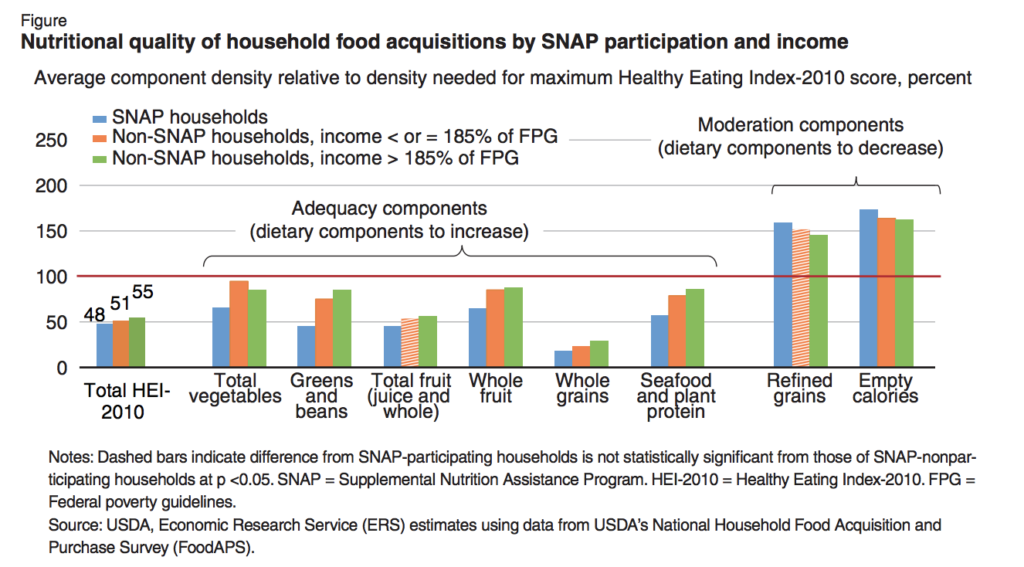
U.S. citizens are missing the mark when it comes to nutrition, according to a new study from the United States Department of Agriculture (USDA). The results also suggest that widespread diet changes will be critical to combat obesity and diet-related illnesses like Type-2 Diabetes.
National Household Food Acquisition and Purchase Survey
The USDA aims to educate the public and guide policy efforts, and they used this survey to identify economic and environmental aspects that influence food choices. To identify how things like income level and access to groceries might influence food purchases, the USDA measured nutritional quality of foods across the following factors:
- SNAP participants (previously known as the Food Stamp Program)
- Low-income households
- Higher income households
- Food sources (food-at-home vs. food-away-from-home)
- Access to supermarkets, supercenters, or large grocery stores
To measure nutritional value of foods, the USDA used HEI-2010, “a measure based on how well the mix of foods acquired compares to recommendations from the USDA’s 2010 Dietary Guidelines for Americans.” An HEI-2010 score is a number out of 100 points.
Key Findings
- Overall nutritional quality is average. The overall population has a HEI-2010 score of 53, showing that their food choices do only an average job of meeting dietary recommendations.
- SNAP participants have the lowest score. These scores remained consistent regardless of access to food stores.
- Access to food retail matters. Among non-SNAP-participating households, those with adequate food store access had higher HEI-2010 scores than those without.
- Eating at home increases nutritional quality. Food-away-from-home is of lower nutritional quality than food-at-home across all income groups, but the gap is smaller for SNAP participants.
Summary
Earning the maximum HEI-2010 score would require Americans across all income levels to make major diet changes, including increasing total vegetables, greens and beans, fruit, whole grains, seafood and plant protein, and also decreasing refined grains and empty calories.








